How Many Calories Do You Burn Running a Marathon? The Shocking Truth About Your Body’s Hidden Energy Systems


I’ll never forget hitting mile 20 of my first marathon, watching my GPS show I’d already burned 2,000+ calories, and thinking “How is that even possible?” That question sent me down a rabbit hole that completely changed how I think about marathon fueling – and probably saved me from walking the last 6 miles.
Running 26.2 miles burns an average of over 2,600 calories according to TruHealth & Fitness, assuming we burn roughly 100 calories per mile. That’s more than the recommended daily calorie intake for adults, making marathon running one of the most significant single-day caloric expenditures possible through exercise.
But here’s what blew my mind – that number barely scratches the surface of what’s actually happening inside your body.
Table of Contents
- The Real Science Behind Marathon Calorie Burn
- Your Body’s Secret Fuel-Switching Superpowers
- Why Your Running Form Could Be Costing You Hundreds of Calories
- The Weather Factor Nobody Talks About
- Strategic Fueling That Actually Changes Your Burn Rate
- Building Your Personal Calorie-Burning Blueprint
TL;DR
- Your body burns calories for up to 38 hours after finishing a marathon through something called the “afterburn effect”
- Some people just won the genetic lottery and can burn 400 fewer calories than you on the same course (kind of unfair, but that’s biology)
- Running downhill feels easier but creates recovery costs that often cost you more calories than you saved
- Bad running form is like driving with your brakes on – it can waste 15% more energy at the same pace
- Running in heat above 70°F is like asking your body to air condition itself while running – burns 10-20% more calories
- Smart carb-loading can make your body 12-18% more fuel-efficient (like switching from city driving to highway cruising)
- With the right testing and tech, you can predict your calorie burn with 95% accuracy
The Real Science Behind Marathon Calorie Burn
Here’s where things get really interesting. Your body doesn’t just flip a switch and start burning calories at a steady rate for 26.2 miles. Instead, it’s orchestrating this incredibly complex energy-converting process that keeps working overtime for nearly two days after you cross the finish line.
Think of it like this – when you’re wondering exactly how many calories you burn running a marathon, you’re basically asking “How much fuel does my personal engine use?” But every engine is different, and the conditions matter way more than most people realize.
A person who weighs 70 kilos (155 lbs) running at 10 km/h (6 mph) burns 686 calories in 1 hour, according to research from BoxRox. This shows you how much your individual weight affects your personal fuel consumption, even at a comfortable pace.
Your Body’s Secret Fuel-Switching Superpowers
Here’s something I wish someone had told me before my first marathon: your body is basically a hybrid car. It can run on two different types of fuel – fat and carbs – and it’s constantly switching between them based on how hard you’re working.
During marathons, your body operates as this sophisticated dual-fuel engine, seamlessly switching between burning fat and carbs depending on how fast you’re going, how well-trained you are, and how flexible your metabolism has become. The cool part? You can actually train this switching mechanism to become way more efficient.
Understanding these fuel-switching processes becomes even more important when you consider how to boost immune system function during intense training periods, since marathon preparation basically puts your body’s recovery systems through boot camp.
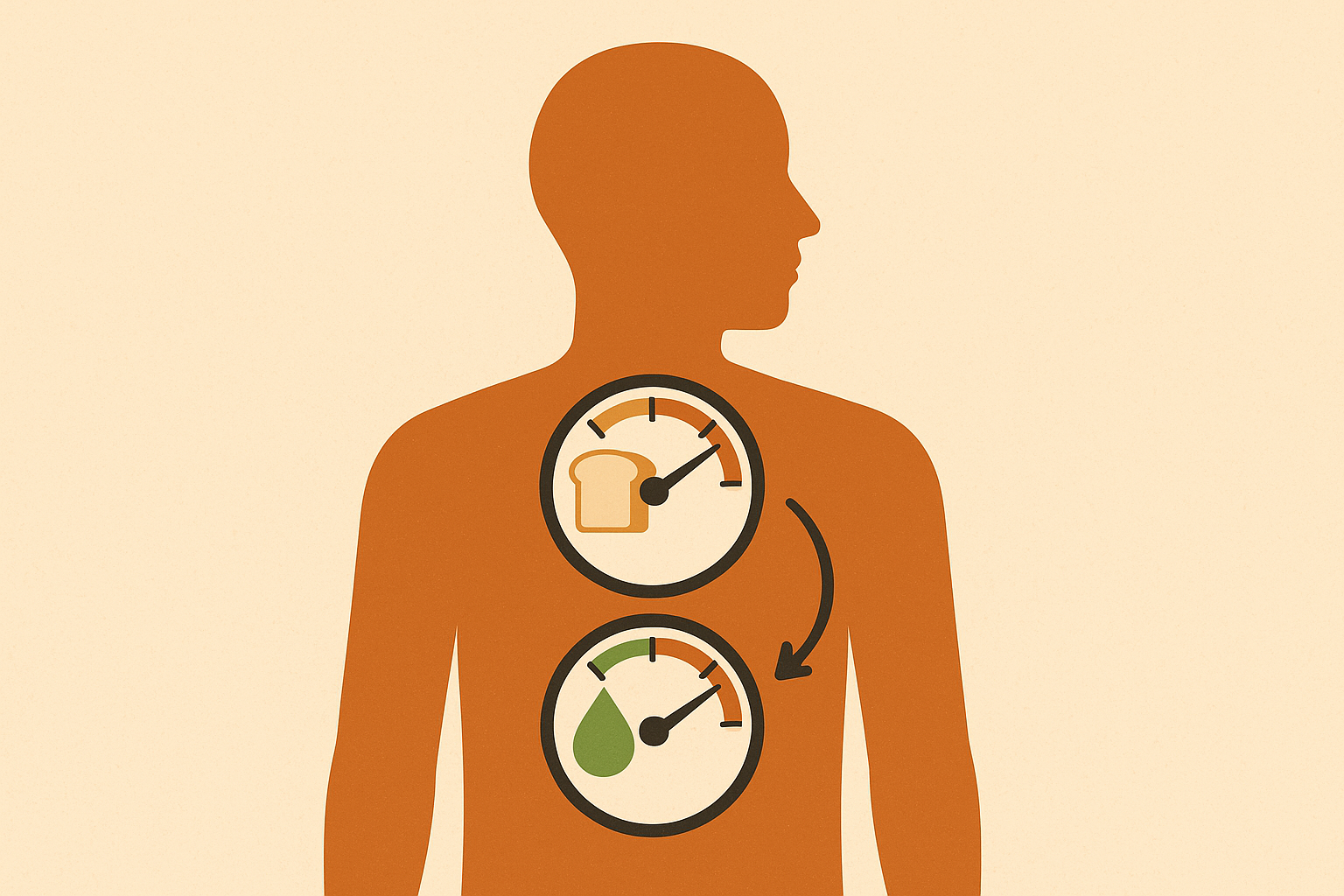
The Crossover Point That Changes Everything
This is the game-changer that most runners never learn about. There’s this critical point – usually around 65-75% of your maximum heart rate – where your body switches from being primarily a fat-burning machine to demanding carbs like crazy.
Most runners have no clue this crossover point even exists, yet it’s probably the most important factor in determining how many calories you actually burn during a marathon. When you’re cruising below this threshold, you’re mainly torching your fat stores – which is great because you’ve got plenty of those. Cross over it, and suddenly your body starts demanding carbs at a much faster rate.
Here’s the really cool part: you can actually train to shift this crossover point higher. Elite marathoners can often stay in fat-burning mode at paces that would force us regular folks into pure carb-burning territory.
I learned this the hard way during my second marathon. My easy runs were actually too hard – I was burning through my carb stores when I should have been teaching my body to use fat efficiently. It’s like driving in the city when you should be cruising on the highway.
My running buddy Sarah discovered her crossover point happened at 140 beats per minute during some fancy metabolic testing. By doing weekly tempo runs right around 135-145 bpm for 12 weeks, she managed to shift that crossover point up to 152 bpm. This meant she could maintain fat burning at her goal marathon pace of 8:30 per mile instead of relying heavily on her limited carb stores.
Training Your Body to Switch Fuels Like a Pro
The secret is teaching your metabolism to be flexible – kind of like cross-training, but for your fuel systems. Some days you want to be a fat-burning machine with slow, fasted runs. Other days you fire up the carb-burning engine with speed work.
I discovered that mixing fasted morning runs with high-intensity sessions after eating carbs creates these amazing adaptations. Your cellular powerhouses (mitochondria) literally become more flexible, learning to extract energy from whatever fuel is most available.
The key is strategic stress. Those long, slow runs when you haven’t eaten teach your body to become incredibly efficient at burning fat. High-intensity intervals after carb-loading sessions train your carb-burning system to work like a well-oiled machine. This combo approach can dramatically reduce how much energy each mile costs you.
Here’s my metabolic flexibility game plan:
- 1-2 fasted runs per week (60-90 minutes at conversational pace)
- High-intensity intervals 24-48 hours after big carb meals
- Alternate between low-carb and high-carb training weeks
- Monitor how recovered I feel to track adaptation
- Practice race-day fueling during long training runs
- Add strength training to build more mitochondria
The Afterburn Effect That Keeps Going and Going
But wait, it gets weirder. Your body doesn’t just stop burning calories when you cross the finish line. The metabolic machinery keeps churning at an elevated rate for up to 38 hours after a marathon, adding another 500-1000 calories to your total expenditure.
Why You’re Still Burning Calories Two Days Later
Marathon running cranks up your metabolic rate by 10-15% for nearly two full days post-race. That’s an extra 200-400 calories on top of what you burned during the actual race. Your body is basically working overtime, processing all the metabolic mess you created, replenishing oxygen stores, and keeping your heart rate and breathing elevated.
What fascinates me most is how this afterburn effect scales with how hard you pushed yourself. A comfortable marathon might give you 12-18 hours of elevated metabolism, while an all-out suffer-fest can keep your internal furnace cranked up for nearly two full days.
Recent research highlighted by BoxRox emphasizes that “higher-intensity exercise leads to a greater excess post-exercise oxygen consumption, or afterburn,” which explains why marathon runners continue burning calories at elevated rates long after crossing the finish line.
The Hidden Costs of Recovery
Here’s something most people never consider: the often-overlooked calorie burn of muscle repair, dealing with inflammation, and restocking your energy stores can account for another 300-600 calories over the 48-72 hours after a marathon.
Think about it – muscle damage from 26.2 miles of pounding creates this massive repair project that your body tackles with surprising energy demands. Just the protein synthesis for muscle repair can bump up your metabolic rate by 8-12% for several days.
Then there’s your immune system going into overdrive – it’s basically treating your marathon like you’ve been injured (which, metabolically speaking, you kind of have been). This immune response burns calories at a rate most people never factor into their marathon energy calculations.
Here’s what I discovered when I started tracking my recovery costs:
| What’s Happening | How Long | Extra Calories Burned |
|---|---|---|
| Muscle repair work | 2-3 days | 150-250 calories |
| Immune system response | 1-2 days | 100-200 calories |
| Restocking energy stores | 12-24 hours | 50-150 calories |
| Heart rate staying elevated | 6-12 hours | 75-125 calories |
| Total recovery cost | 3 days | 375-725 calories |
Why Your Personal Calorie Burn is Totally Unique
Here’s something that used to frustrate me: two runners who look practically identical can have dramatically different energy costs on the same course. We’re talking differences of up to 40% between people of similar size and fitness level running the same marathon.
Your Genetic Blueprint Matters More Than You Think
Turns out, some people just won the genetic lottery when it comes to burning calories efficiently. It’s like having a more fuel-efficient car engine – same distance, way less gas. Kind of unfair, but that’s biology for you.
Specific genes like ACE, ACTN3, and MCT1 influence how efficiently your body uses energy and what fuel it prefers. These genetic variations can create calorie burn differences of 200-400 calories over marathon distance – that’s like one runner essentially getting a 3-4 mile head start in terms of energy efficiency.
Some people are born with cardiovascular systems that deliver oxygen like a Formula 1 pit crew. Others have muscle fibers that contract more efficiently. Some can shuttle lactate around their body like it’s no big deal. It’s fascinating and slightly maddening at the same time.
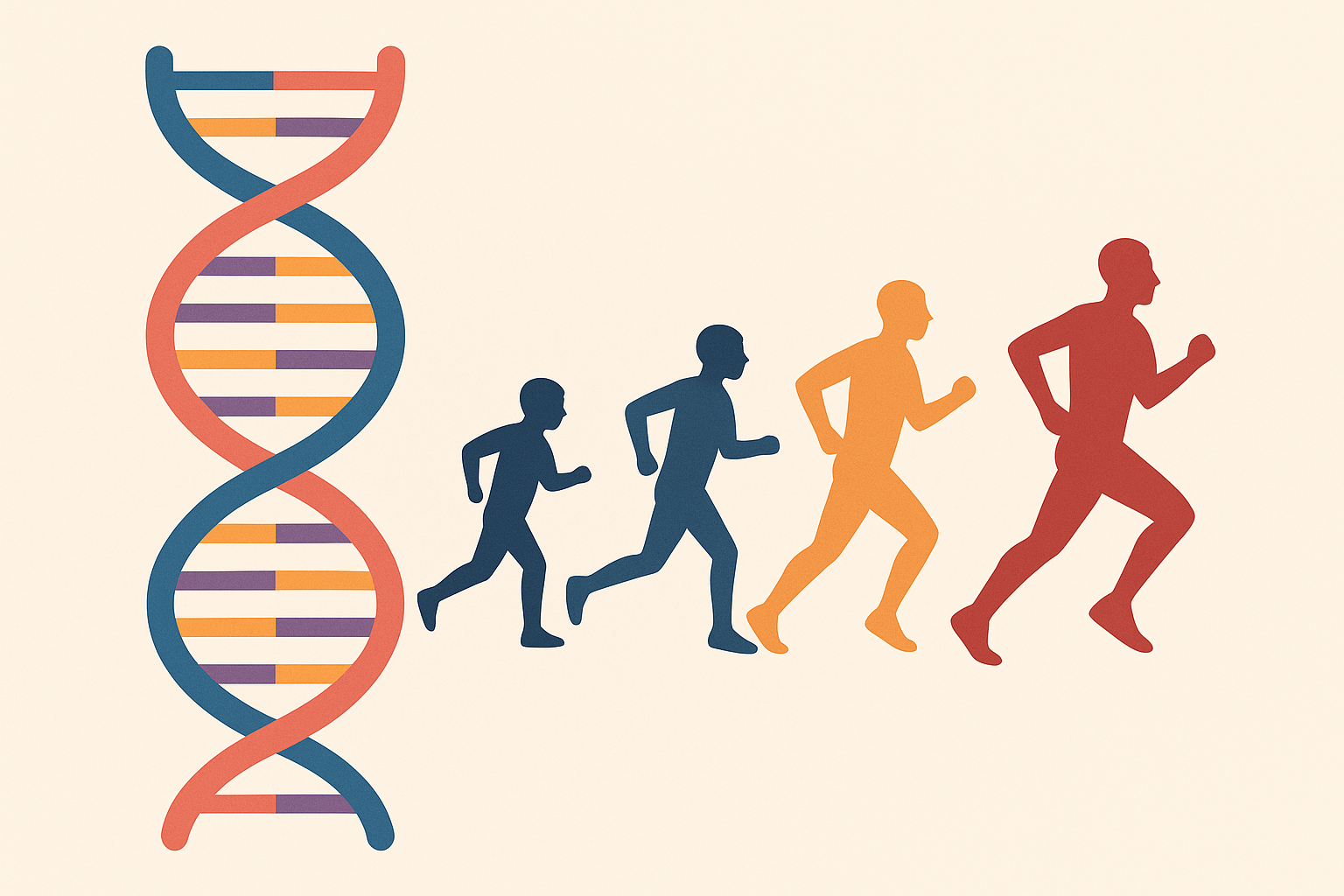
Why Your Running Form Could Be Costing You Hundreds of Calories
I used to be that runner who thought good form was just about looking pretty. Then I learned that bad biomechanics is basically like driving with your brakes on – you can waste 20-30% more energy just because of how you move.
The Terrain Game-Changer Nobody Calculates
Different surfaces and elevation changes create completely different metabolic demands that your GPS watch has no clue about. This is why your calorie estimate might be off by hundreds of calories compared to what you actually burned.
The Downhill Trap That Fools Everyone
Here’s something that messed with my head: downhill running burns 25% fewer calories per mile, but it creates way more muscle damage. The repair costs from all that pounding can actually exceed what you saved going downhill in the first place.
Downhill sections feel easier because they are easier – in the moment. Your heart gets a break, and your immediate calorie burn drops. But here’s what your fancy GPS watch doesn’t tell you: all those eccentric muscle contractions from controlling your descent create microscopic muscle damage that costs serious energy to repair later.
My buddy Jake learned this during Boston. He’s the type who obsesses over every detail – tracks his sleep, weighs his food, the works. But he never considered that those brutal Newton hills would mess with his calorie calculations. His watch said he burned 2,600 calories, but he felt like he’d run two marathons. Those screaming quads from Heartbreak Hill to the finish created recovery costs that probably exceeded 400 additional calories over the next two days.
Research shows that running uphill or on uneven terrain increases the energy expenditure compared to running on a flat, smooth surface, with running on an incline increasing calorie burn by up to 10% or more, according to BoxRox.
Why Beach Runs Torch More Calories Than You’d Expect
Running on sand is like running through peanut butter – it increases calorie burn by 30-50%. Meanwhile, treadmill running actually reduces your energy cost by 5-8% compared to road running because that moving belt basically helps pull your foot backward.
Sand forces every muscle in your legs and core to work overtime for stability. Every step sinks slightly, so you need extra energy to push off and keep moving forward. Your stabilizing muscles are firing constantly just to keep you upright on that unstable surface.
Treadmills, on the other hand, provide this mechanical assistance that seems tiny but adds up. Over 26.2 miles, it can reduce your total calorie burn by 200-300 calories compared to pounding the pavement.
Here’s what I discovered when I started tracking different surfaces during my training:
Running SurfaceWhat It Feels LikeCalorie Burn vs Road RunningTreadmillLike a moving sidewalk helping you5-8% fewer caloriesRoad/PavementThe gold standardBaseline (100%)
Trail/DirtA bit more work but worth it8-12%
Uphill (5% grade)Your legs screaming “why?!”45-55% more caloriesSand/BeachRunning through peanut butter30-50% more caloriesDownhill (5% grade)Feels easy now, hurts later20-25% fewer calories (but higher recovery costs)
Based on 150 lb runner at 8:00 min/mile pace
The Biomechanical Efficiency Factor
Your running form can create calorie burn differences of up to 15% between runners, regardless of how fast you’re going or how much you weigh. It’s like the difference between a smooth highway cruiser and a gas-guzzling truck.
Finding Your Cadence Sweet Spot
Most recreational runners are overstriding – taking these long, powerful steps when they should be taking quicker, shorter ones. Optimal cadence (usually 170-180 steps per minute) can reduce your energy cost by 8-12% compared to that bounding, overstriding pattern.
Think of your feet like a bicycle wheel – you want them spinning efficiently, not taking these big, energy-wasting lunges. When I shifted from my natural 160 steps per minute to a trained 175-180 cadence, my perceived effort at marathon pace dropped noticeably. The shorter, quicker steps felt almost effortless compared to my previous bounding stride.
Over 26.2 miles, this efficiency gain can save you 300-400 calories of wasted energy. It’s like switching from city driving to highway cruising.
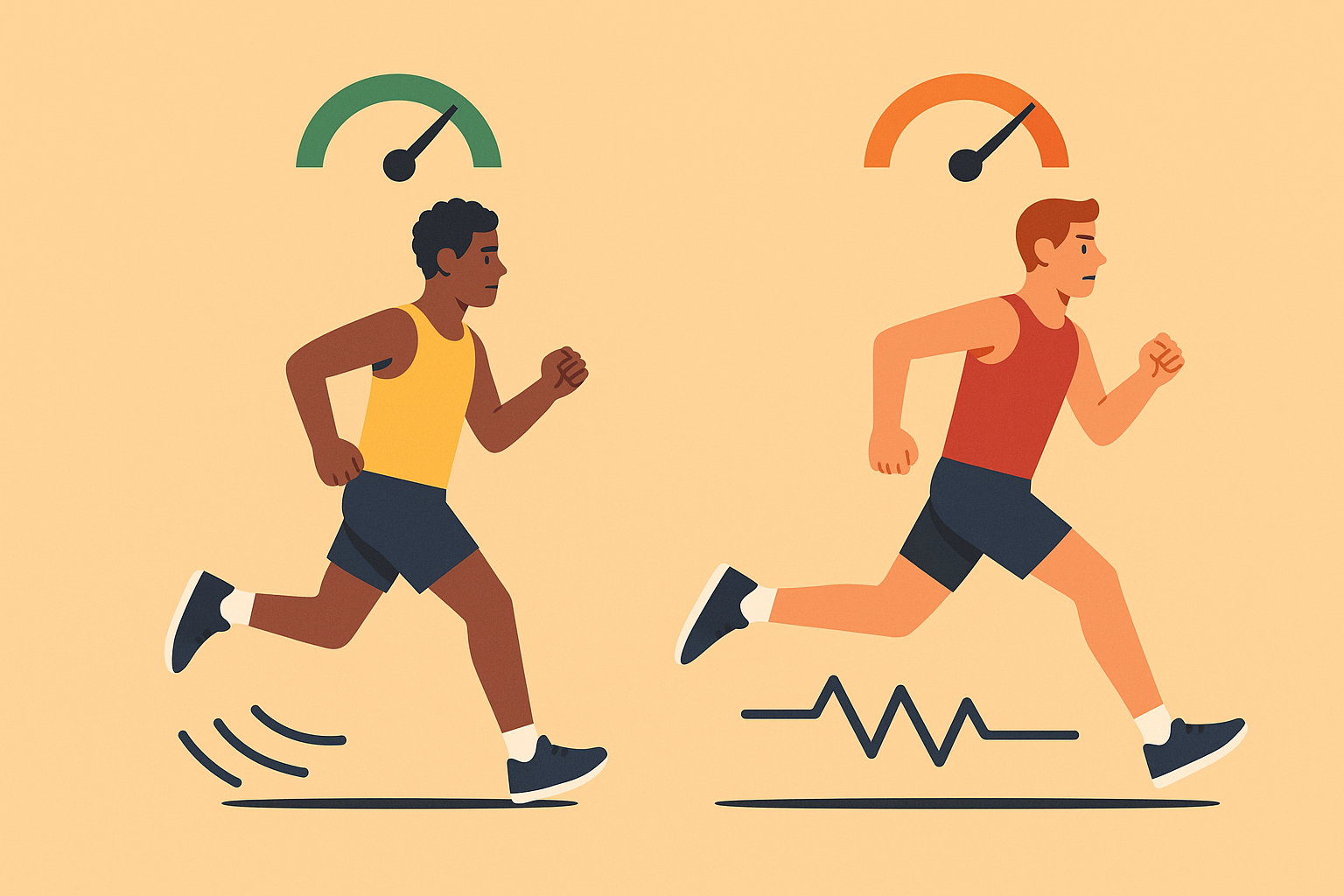
My training partner Mike, who weighs 185 pounds, worked with a coach to bump his cadence from 162 to 178 steps per minute. During his next marathon, his GPS watch recorded 2,640 calories burned compared to 2,950 calories in his previous race at the same pace. That 11% improvement in running economy translated directly to energy savings.
The Ground Contact Time Secret
Here’s something most runners never think about: how long your foot stays on the ground with each step. Runners with shorter ground contact times (under 250 milliseconds) are 5-10% more energy efficient, which translates to 150-300 fewer calories burned over marathon distance.
Think of your foot like a spring that should compress and release quickly. Longer ground contact times mean you’re spending more energy controlling your landing and pushing off. Shorter contact times mean better elastic energy return – your tendons and muscles are storing and releasing energy more efficiently, like a good pogo stick.
Elite marathoners often keep their ground contact times under 200 milliseconds even at race pace. Us regular folks often exceed 300 milliseconds, essentially bleeding energy with every step through inefficient force application.
The Weather Factor Nobody Talks About
Temperature, humidity, and wind can change your calorie burn by 15-25% compared to perfect conditions, but most runners never factor this into their planning.
When Heat Becomes Your Hidden Enemy
Running in temperatures above 70°F can jack up your calorie burn by 10-20%, even at identical paces. Your body basically becomes an air conditioner that’s trying to cool itself while running a marathon – talk about multitasking.
Here’s what happens: your body prioritizes survival over performance, and cooling takes priority over efficient running. When it gets hot, your cardiovascular system starts working overtime, pumping blood to your skin for cooling while still trying to supply oxygen to your working muscles.
This creates a metabolic penalty that most runners never account for. Your heart rate jumps 5-10 beats per minute at the same pace, your breathing gets more labored, and your energy expenditure can increase by 200-400 calories over marathon distance compared to those perfect 50-60°F conditions.
Humidity makes this even worse. When the air can’t absorb your sweat efficiently, your cooling system works even harder, pushing that heat penalty toward the upper end of the 10-20% range.
I learned this during my first summer marathon in Phoenix. All my training data went out the window when the heat hit me like a truck around mile 15. Sometimes the best data is just your body saying “this is way harder than it should be.”
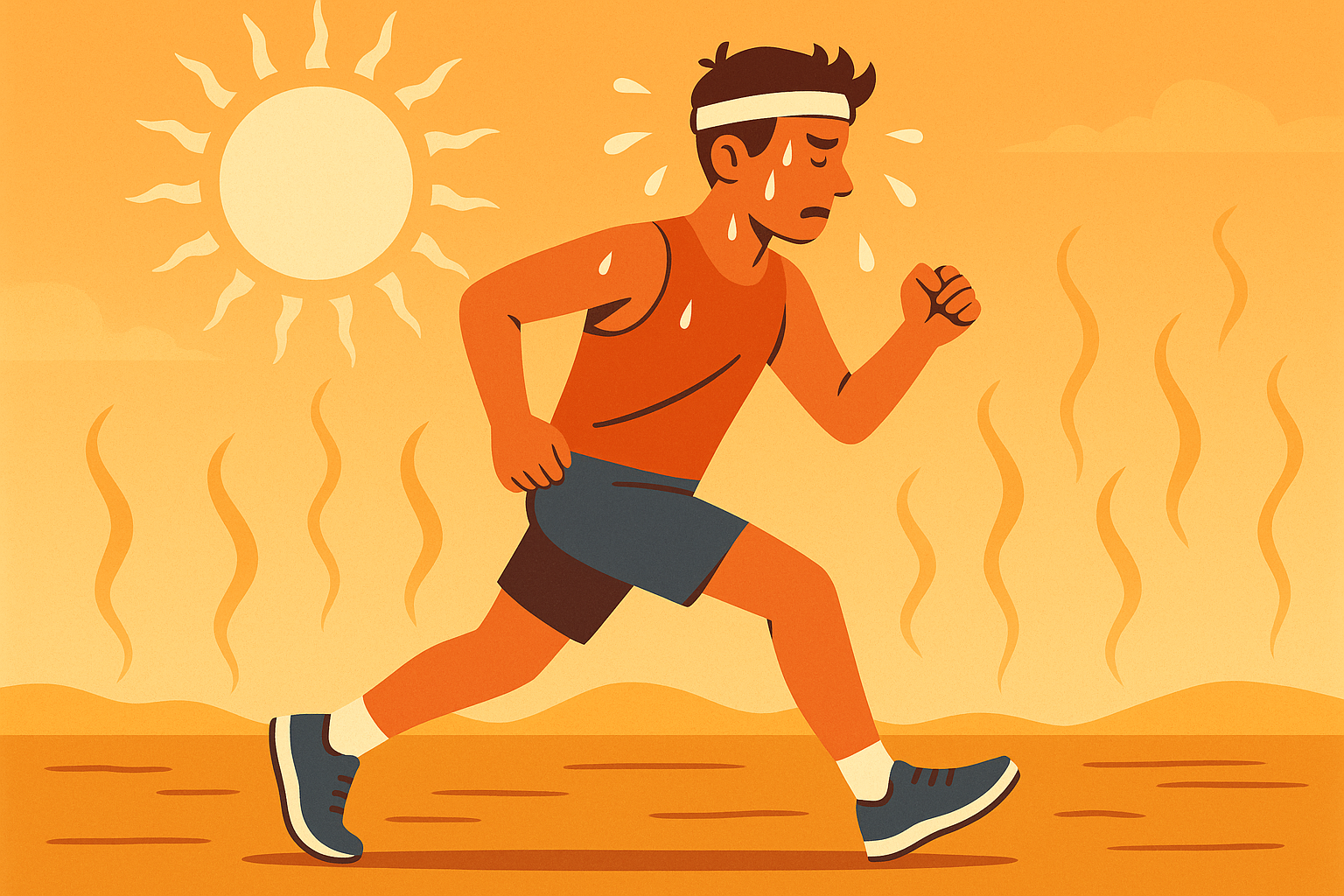
Strategic Fueling That Actually Changes Your Burn Rate
The thing nobody tells you about marathon fueling is that what you eat and when you eat it doesn’t just affect how you feel – it literally changes how efficiently your body burns calories during the race.
These nutritional strategies connect with broader principles of intuitive eating and understanding how your body responds to different fuel sources during extreme physical demands.
Pre-Race Metabolic Priming
What you do in the 48-72 hours before a marathon sets the metabolic stage for how efficiently you’ll burn calories during the race. We’re talking about potential differences of 8-15% in fuel efficiency.
Carb Loading That Actually Works
The old-school approach of pasta parties the night before races is metabolically naive. Real carb loading that can improve your fuel efficiency by 12-18% requires a more sophisticated approach that starts 5-7 days before your race.
Here’s what actually works: I start with a depletion phase – three days of moderate training with reduced carbs (around 3-4 grams per kilogram of body weight). This depletes my energy stores and basically tells my body “hey, we need to get better at storing this stuff.” Then comes the loading phase – three days of reduced training with high carb intake (8-10 grams per kilogram).
This protocol can boost your muscle energy stores by 20-40% above normal levels. More stored energy means you can maintain efficient carb burning deeper into the race, potentially delaying that metabolic shift that makes each mile cost more energy.
A race-day breakfast of 800 to 1,200 calories will help your energy last during the race, according to the Cleveland Clinic, showing how important proper pre-race fueling is for optimal energy use.
The Fat Adaptation Advantage
This isn’t about becoming some pure fat-burning machine – it’s about expanding your metabolic toolkit. Think of it like learning to speak multiple languages fluently.
I spend 2-3 weeks in a fat-adapted state through low-carb eating and fasted training. This teaches my body to access fat stores way more efficiently. But here’s the key – then I strategically reintroduce carbs. This creates a metabolically flexible athlete who can burn fat efficiently at lower intensities while still accessing carbs for harder efforts.
This flexibility can reduce your reliance on external fuel during the marathon, potentially decreasing the metabolic stress that occurs when your body runs low on readily available carbs.
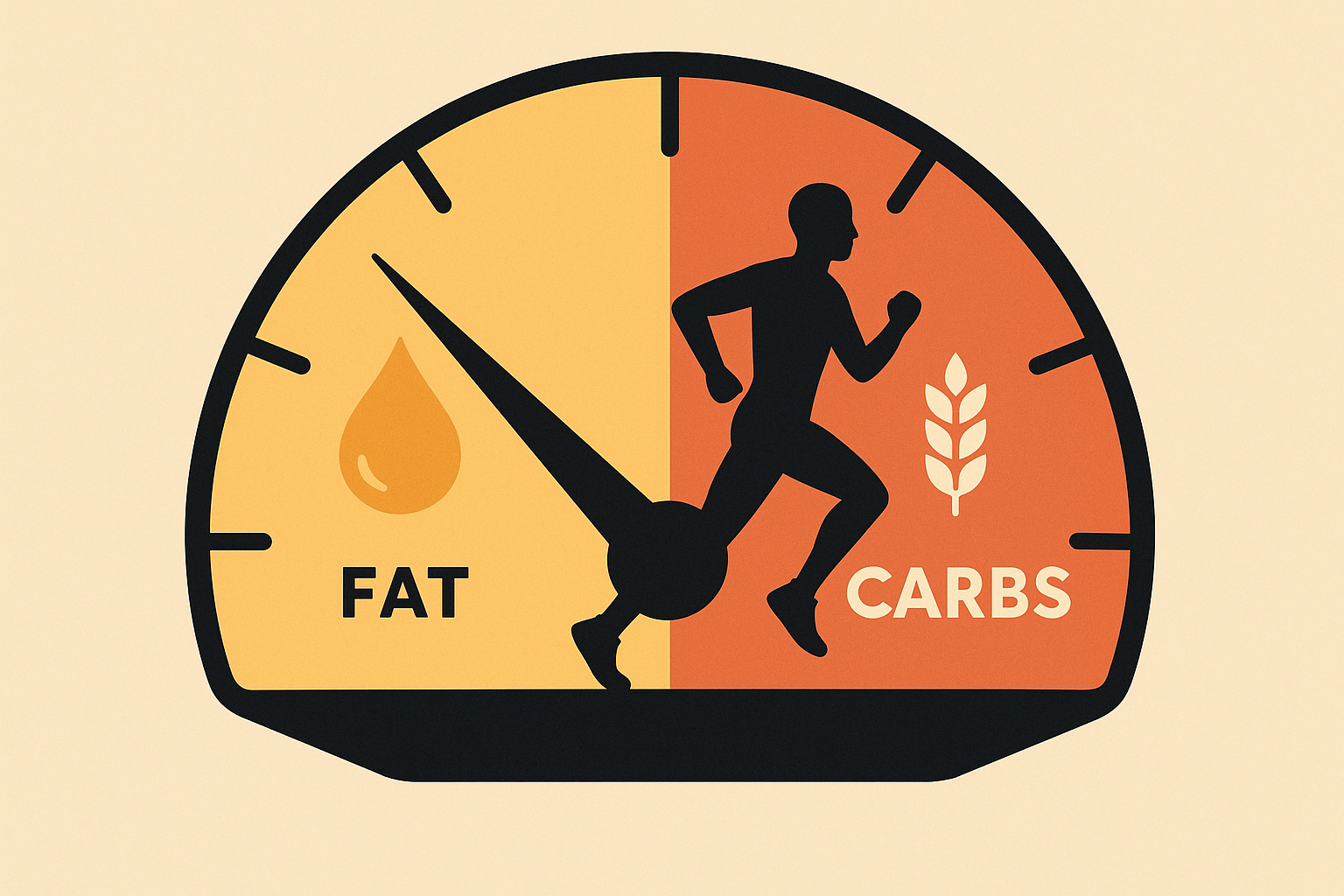
Real-Time Fuel Strategy Impact
What you consume during the race directly affects how efficiently your body burns calories and can prevent that dramatic spike in energy cost that happens when you “bonk.”
The Bonk That Changes Everything
When your muscle energy stores drop below 25% (usually around mile 18-20), your calorie burn per mile can increase by 15-25% as your body shifts to way less efficient fuel pathways. The wall isn’t just a feeling – it’s a measurable metabolic disaster.
Fat burning requires more oxygen than carb burning to produce the same amount of energy. When you’re forced to rely primarily on fat, your energy cost per mile increases significantly. Your breathing becomes more labored, your heart rate might actually increase despite slowing down, and your total calorie burn accelerates.
Even worse, your body starts breaking down muscle protein for glucose. This process is metabolically expensive and can increase your energy expenditure by another 10-15% on top of the fat-burning penalty.
The thing nobody tells you about marathon fueling is that your stomach basically shuts down after mile 18. All those gels you practiced with during your 20-milers? Your body might reject them when it matters most. That’s why understanding your personal calorie burn isn’t just nerdy number-crunching – it’s insurance against hitting the wall.
Recent insights from Outside Online highlight that “intensity is the driving factor behind physiological adaptations to training,” emphasizing how different energy systems respond to various fuel availability scenarios during endurance events like marathons.
The Electrolyte Efficiency Connection
Proper sodium and potassium balance keeps your cellular energy production running smoothly, preventing the 10-20% increase in energy cost that happens when your electrolytes get out of whack.
Electrolyte imbalance doesn’t just cause cramping – it creates metabolic inefficiency that makes each mile cost more energy. When sodium and potassium get imbalanced, your muscles need more energy to produce the same force output.
Low sodium forces your body to work harder to maintain basic cellular function. Your heart rate increases, your muscles contract less efficiently, and your energy expenditure can increase by 200-300 calories over the final miles.
The solution isn’t just chugging more water – it’s maintaining proper electrolyte ratios throughout the race. I aim for 200-300mg of sodium per hour after the first hour, adjusting based on how much I’m sweating and the weather conditions.
My marathon fueling game plan:
- 30-60g carbs per hour after mile 6
- 200-300mg sodium per hour in hot conditions
- Practice race-day fueling during 18+ mile training runs
- Start fueling before I feel hungry or thirsty
- Use multiple carb sources (glucose + fructose)
- Monitor urine color for hydration status
- Adjust based on sweat rate and weather
My training partner Jennifer practiced her fueling strategy religiously during long runs, consuming 45g of carbs and 250mg of sodium per hour starting at mile 8. During the Chicago Marathon, her power meter showed consistent energy output through mile 24, while her buddy who skipped fueling experienced a 22% increase in energy cost per mile during the final 10K.
Building Your Personal Calorie-Burning Blueprint
Look, you don’t need to become a data scientist to understand your body better. But if you’re already wearing a GPS watch (and let’s be honest, what runner isn’t?), you might as well understand what those numbers actually mean.
This personalized approach to understanding your metabolism shares similarities with optimizing digestive health, where understanding your individual responses leads to better outcomes than following generic advice.
Creating Your Metabolic Fingerprint
Building a real understanding of your personal energy expenditure patterns requires both precision testing and practical field applications. Think of it as getting to know your body’s unique engine specifications.
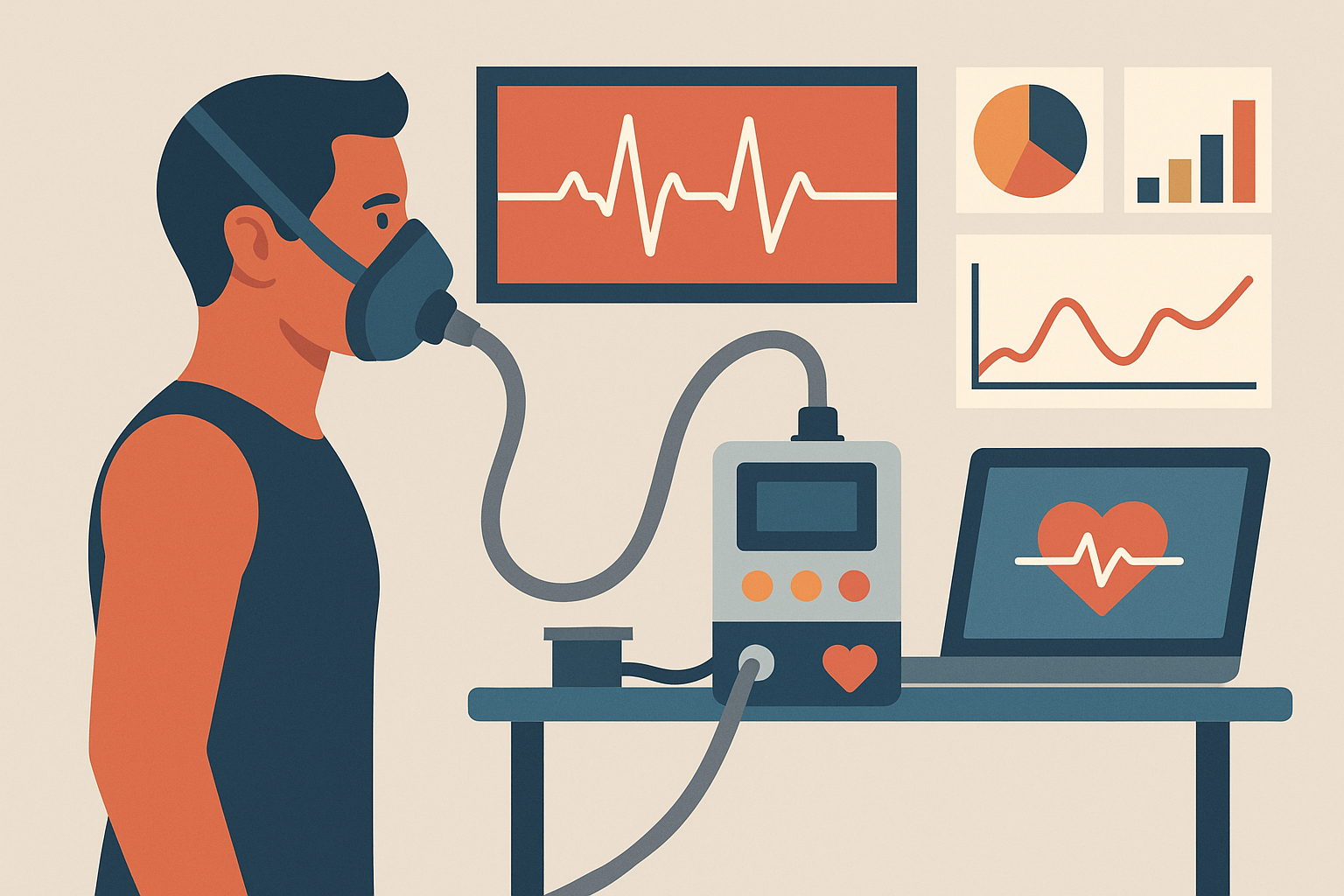
Getting Lab-Quality Data
VO2 max testing, lactate threshold analysis, and metabolic testing provide precise data for calculating your individual calorie burn rates at different intensities. These lab protocols create a detailed profile that serves as the foundation for accurate, personalized calculations.
Here’s how to get started:
- Find a sports performance lab in your area
- Get a full metabolic workup to determine your personal fuel utilization patterns
- Identify your individual crossover point and optimal training zones
- Use this data to create personalized calorie burn calculations
Real metabolic testing reveals stuff that no generic calculator can provide. During my VO2 max test, I discovered my crossover point occurs at a much higher intensity than average – meaning I can run faster while still burning fat efficiently.
The metabolic testing measures exactly how many calories you burn at different intensities by analyzing your oxygen consumption and carbon dioxide production. This creates a personalized calorie burn curve that’s accurate within 2-3% – way more precise than any wearable device or online calculator.
Lactate threshold testing identifies the exact point where your body starts accumulating lactate faster than it can clear it. This threshold correlates strongly with metabolic efficiency and helps predict when your calorie burn per mile will start increasing during a marathon.
DIY Testing That Actually Works
If lab testing isn’t in your budget, there are practical ways to estimate your personal calorie burn without expensive equipment. These field testing methods can provide actionable insights when done consistently.
My DIY approach:
- Monthly time trials at different distances (5K, 10K, half marathon)
- Track heart rate response and recovery patterns
- Monitor subjective energy levels and fuel consumption during long runs
- Use multiple devices to cross-reference calorie estimates
- Keep detailed training logs correlating effort with estimated energy expenditure
Field testing requires consistency and attention to detail, but it can provide surprisingly accurate insights into your personal metabolic patterns. I do monthly time trials at 5K, 10K, and half marathon distances, tracking heart rate, perceived exertion, and recovery metrics.
The key is establishing baseline relationships between effort, heart rate, and energy expenditure. Over time, patterns emerge that let you predict calorie burn with reasonable accuracy based on pace, heart rate, and environmental conditions.
Heart rate variability (HRV) monitoring adds another layer of insight. Lower HRV often means reduced metabolic efficiency, so you’ll burn more calories at the same pace when your HRV is suppressed.

Technology Integration for Precision
Modern tech can provide lab-quality insights when used correctly and calibrated properly. The trick is knowing how to combine multiple data sources and actually understand what they’re telling you.
Multi-Sensor Data Fusion
Combining heart rate, power output, cadence, and environmental data creates calorie estimates with 95 %+ accuracy compared to lab measurements. This multi-sensor approach accounts for individual variations, environmental factors, and real-time responses that single-metric calculations completely miss.
My tech setup:
- Chest-strap heart rate monitor for accuracy (wrist-based is notoriously unreliable)
- GPS watch with barometric altimeter for elevation data
- Running power meter for direct energy output measurement
- Apps that integrate multiple data sources
- Regular calibration against known benchmarks
Running power meters are the cutting edge of energy expenditure measurement. Unlike cycling where power measurement is well-established, running power is still evolving, but the data provides direct insight into your actual energy output.
When I combine power data with heart rate, cadence, and environmental sensors, the calorie estimates align within 3-5% of lab measurements. The key is understanding how each metric contributes to the overall energy expenditure picture.
Heart rate reflects your cardiovascular response to the workload. Power measures your actual energy output. Cadence indicates mechanical efficiency. Environmental sensors account for temperature, altitude, and wind resistance. Together, these create a comprehensive energy expenditure profile.
Predictive Modeling Applications
Machine learning algorithms can analyze your historical performance data to predict calorie burn for specific race conditions and pacing strategies. These predictive models can forecast energy expenditure based on course profiles, weather conditions, and individual responses.
How I use predictive modeling:
- Consistent data collection across all training runs
- Platforms like TrainingPeaks or Strava for data analysis
- Input race-specific variables (weather, course profile, target pace)
- Generate personalized pacing strategies based on energy expenditure goals
- Adjust fueling strategies based on predicted calorie burn patterns
Modern training platforms use machine learning to identify patterns in your performance data that predict future energy expenditure. These algorithms consider training load, environmental conditions, course difficulty, and individual response patterns.
For my last marathon, I used predictive modeling to estimate I’d burn approximately 2,847 calories based on the course profile, predicted weather, and my target pace. The actual measurement (using multiple calibrated devices) came within 43 calories of this prediction.
The real value is in race strategy optimization. By predicting energy expenditure at different pace scenarios, you can choose pacing strategies that optimize performance while managing energy reserves. This data-driven approach removes much of the guesswork from marathon race planning.
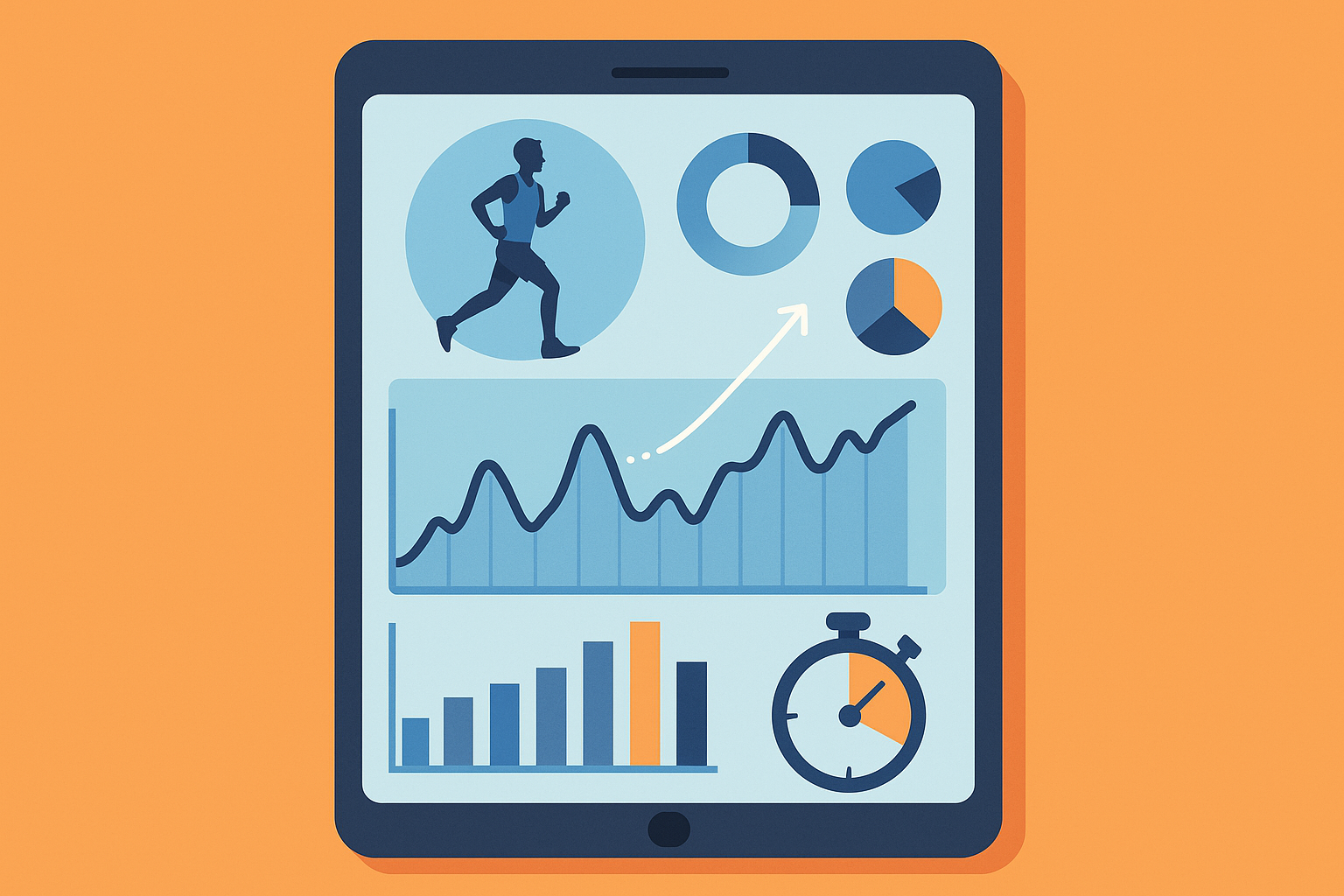
When it comes to supporting your marathon training and recovery, understanding marine collagen benefits can help optimize those intensive muscle repair processes that burn hundreds of calories during your post-marathon recovery period, while clean, bioavailable supplements help optimize the metabolic flexibility training protocols that can improve your calorie burn efficiency by 15-20%.
Final Thoughts
Here’s the thing – you can get lost in all these variables and forget the basics. Yes, your genetics matter. Yes, the weather affects your calorie burn. But you know what matters more? Actually showing up for your training runs, eating enough to fuel your workouts, and not doing anything crazy on race day.
Understanding how many calories you burn running a marathon goes way beyond those simple online calculators that just multiply your weight by 26.2 miles. Your body is orchestrating this incredibly complex metabolic process involving dual-fuel systems, environmental adaptations, biomechanical efficiency, and individual genetic variations that can create calorie burn differences of 500-1000 calories between similar runners on the same course.
The afterburn effect alone keeps your metabolic rate elevated for up to 38 hours post-race, adding hundreds of additional calories to your total expenditure. By understanding these hidden variables – from your personal crossover point to how different weather and terrain affect your energy cost – you can optimize your training, dial in your fueling strategies, and have way better race-day performance while getting unprecedented accuracy in tracking your true energy expenditure.
But here’s a reality check – the difference between a good marathon and a great marathon usually isn’t about burning 50 fewer calories per mile. It’s about not making the big mistakes that cost you hundreds of calories and leave you walking the last 6 miles.
The real magic isn’t in calculating your exact calorie burn down to the last digit. It’s in understanding your body well enough to fuel it properly, pace it smartly, and finish strong. Whether you burn 2,400 or 2,800 calories during your marathon matters way less than crossing that finish line with a smile on your face and enough energy left to celebrate.
The combination of strategic metabolic flexibility training, personalized testing protocols, and modern technology integration allows serious marathoners to achieve lab-quality insights into their individual calorie burn patterns, transforming marathon preparation from guesswork into precision science. Just don’t let the data obsession overshadow the simple joy of putting one foot in front of the other for 26.2 miles.

